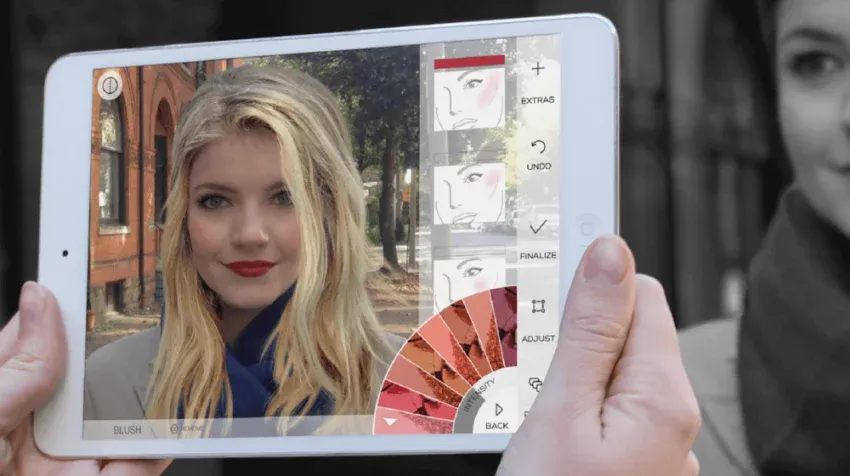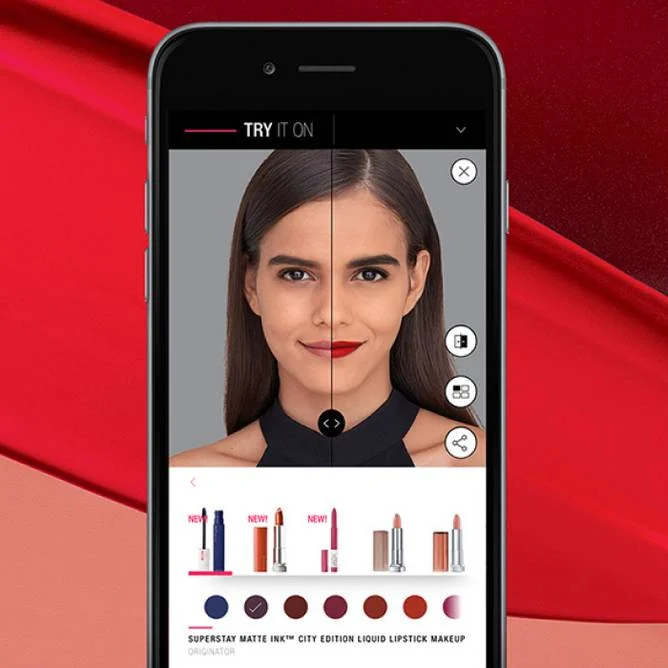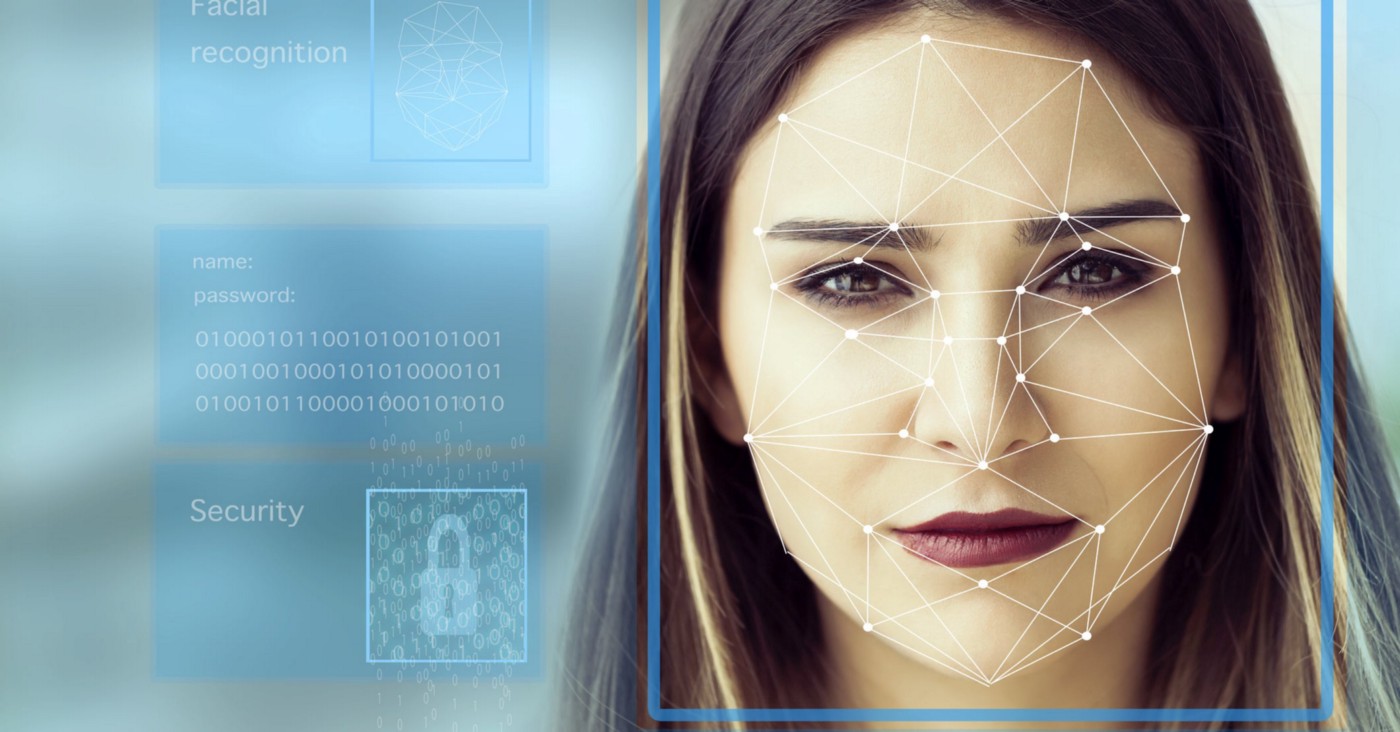AI in business: how beauty industry utilizing facial image analysis techniques?

Previously, AI (Artificial Intelligence) hadn't yet played a significant role in the beauty industry.
We only had to visit the nearest department store, choose the ideal makeup and put it on whenever we required fresh makeup for a girls' night out.
But nowadays, AI has taken control over the beauty industry to some extinct.
One of the best ways to try on makeup is in a digital setting with AI assistance (artificial intelligence). Beauty enthusiasts can now experiment with new makeup in only a few clicks.
Huge thanks to the use of artificial intelligence in our mobile applications, using it is not very challenging.
To grasp computer vision, follow a few simple steps. Turn on your front-facing camera and let AI recognize your face's focal points or landmarks (it can be your nose, eyes, eyebrows, lips, etc).
The next step is to try on the makeup to choose the proper hues after the equipment has scanned your face.
Computer vision technology is used in augmented reality to add in-the-moment visual elements to the face.
The beauty industry will be redeemed by computer vision in the future, according to these tendencies.
Table of Contents
- Applications for Augmented Reality on Makeup and Skin Type Access
- AI-Powered Search for Cosmetics
- Creating Customer-Focused Products
- How Does the Beauty Industry Utilize Facial Image Analysis Techniques?
Applications for augmented reality to test on makeup virtually/advanced skin type access
Shopping online for makeup or other beauty supplies is like finding a minefield. Without a try-on option or expert advice, your chances of finding what you want and the appropriate hues are slim to none.
Particularly when picking out skincare items or foundations. Applications for computer vision can be useful here. Most major cosmetic companies offer the ability to upload your photo for AI analysis.
This causes the sophisticated computer vision system to display a brief report on your skin type and suggest several cosmetics that might be appropriate for your requirements.

Virtual Try it on by Loreal
AI-powered search for cosmetics
One of the interesting uses of AI technology in the cosmetics sector is personalized.
According to a study by the Tapestry research organization, account a variety 80% of their effort is in the pre-search stage, while just 20% of website users add items to their carts and complete the transaction.
The potential of computer vision includes applications like "Smart beauty items search." Primarily, you are given a questionnaire to complete about the product you are looking for when you visit an online beauty store.
Additionally, AI-powered visual engines will present you with the most appropriate options based on the details of your request.
The beauty sector can employ AI in a variety of ways to provide dynamic, tailored content:
- Data collection and digitization for products, content, and customers
- tagging and structuring data so that it is easily accessible
- cost reduction through data-driven decision-making
In addition to saving the buyer time, this strategy of shopping enhances the experience and boosts the likelihood that they will make a purchase.
Creating customer-focused products
Customer feedback can be analyzed using algorithms powered by artificial intelligence.
The AI algorithms may assess customer comments, opinions, and feedback that are placed on websites, social networking sites, as well as other online platforms using a mix of computer vision and NLP (Natural Language Processing).
The analysis of feedback provided in the form of tangible documents, such as surveys and feedback forms distributed to consumers at retail establishments, can also be done using NLP and computer vision. Businesses can use data analysis to develop products that consumers are more likely to purchase.
As an illustration, Avon created a mascara utilizing their Genius algorithm, which read, analyzed and categorized customer feedback. These recommendations and consumer input were taken into account when developing the mascara.

Computer Vision is being used by various companies in the beauty industry
- Deep learning is used by Beauty.ai to identify the most attractive people on the planet. Their algorithm considers factors including wrinkles, facial symmetry, skin tone, sexual identity, age group, and ethnicity to identify the overall winners.
- Utilizing the ColorIQ app, Sephora helps clients find their ideal match by conducting testing all around the world and offering more than 1,000 foundation options. The software takes pictures of women's skin using 27 color-corrected photographs, eight different light settings, and one UV light.
- Finding influencers, photos, and videos that focus on a certain eye shape and color is a challenge that Mira solves using machine vision. The business seeks an interactive visualization similarity metric between the eyes and a classification that captures human-labeled attributes given a set of facial image examples to choose products and methods better.
How does the beauty industry utilize facial image analysis techniques?
A facial image can be identified (annotated) with a variety of significant characteristics, including gender, race, chin shape, hair color, and more.
The use of facial image annotation in content-based image retrieval is also possible (CBIR). These kinds of technologies search databases for photos that resemble searches.
Step1: Face detection
Whether a face is alone or among a group of people, the camera can identify and locate it using various facial recognition techniques. The subject may be shown facing in front or profile.[1]

Face recognition techniques
Step 2: Analyze the face
The face is then photographed and examined after that. The majority of facial recognition technology uses 2D rather than 3D photographs since it is easier to match a 2D image with existing data or with public photos.
The computer reads your face's geometry. The spacing between the eyes, the depth of the eye sockets, the space between your forehead and chin, the form of the cheekbones, and the shape of your lips, ears, and chin are all important considerations.
The objective is to recognize the distinctive facial features that make your face unique.
Step 3: Transforming the image into data
Based on the subject's facial traits, the face capture procedure converts analog information (a face) into a collection of digital information (data). The examination of your face is reduced to a mathematical equation. The faceprint is a numerical code. Every individual has a faceprint, just like every thumbprint is different.
Step 4: Finding a match
After that, the faceprint is compared to a database of other recognized faces. To find a match, the image is matched with millions of images that are pulled from various state datasets.
Any image that is tagged with a name on Facebook is added to Facebook's database, which is also capable of facial recognition. A decision is made if your faceprint resembles a picture in a facial recognition database.
Before undergoing the processes, it is important to label facial image data for further processes.
Facial annotation comes in handy here. Face Annotation's fundamental premise is to identify facial features and process them for a variety of purposes. To give the face image a suitable name, face annotation techniques are utilized.
The face annotations are recorded in the database at the beginning of this study project so they can be recovered at any moment for subsequent processing. After that, it compares two separate photographs of the same person to determine whether they are all of the same people.
We discussed numerous face annotation methods in this study, including content-based, retrieval-based, search-based, cluster-based, and caption-based methods.
If you are wondering how you can do facial annotation, then don’t worry Labellerr is here!

Labellerr’s SaaS platform simplifies data annotation for virtual try-ons and personalized recommendations. Start now!
We will help you in finding the right data: Data bias can be eliminated by gathering the relevant data and properly documenting it. With consideration for variances in age, gender, and color as well as identifying obstacles like headwear or accessories, Labellerr compiles a broad collection of photographs and videos.
Our training data platform helps in managing projects with ease: The difficulty of data annotation can be greatly reduced by expert teams of annotators working under the direction of knowledgeable internal managers.
Talk to our ML expert to discuss your facial annotation project at support@tensormatics.com.

Simplify Your Data Annotation Workflow With Proven Strategies
.png)


